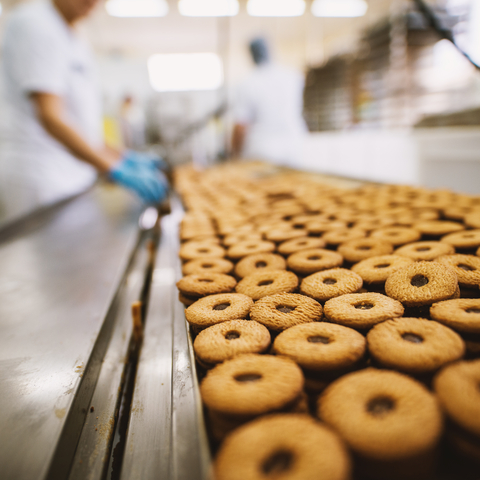Modeling Your Production Process with Multi-Stage Recipes
Food products can be complicated. There are involved techniques, there are recipes that read like chemistry experiments, and then there are foods that require different parts, or subrecipes, to come together for a finished product.
Multi-Stage Food Products
These last items are what we consider multi-stage products. They might involve different components that have to be assembled or they might involve multiple steps that occur on different days to make a single item. Examples that come to mind would be flavored granolas that use the same base recipe and then add flavors before packaging, ice cream sandwiches, and chocolate coated nuts.
Managing Subrecipes for Production
These products create a special set of production challenges. Not only do you need to track multiple recipes at once, but also you need to coordinate processes and production schedules to make sure that sub-components are ready, actions are taking place at the right time, and everything is where it needs to be for the final assembly. This process can take days rather than hours, so it needs to be tracked on paper rather than in your head.
The easiest way to manage this is to model and track your actual multi-step production process rather than lumping it into one. In ReciPal's inventory management software, you can do that with multi-stage subrecipes. By setting up subrecipes within subrecipes, you can model how your process actually works during production. In ReciPal you can do this from your Recipe Dashboard by clicking "Create Subrecipe" from any recipe's Recipe Actions menu. It turns the recipe into an ingredient that can then be used in other recipes.
Multi-Step Inventory In ReciPal
This allows you to include the subrecipe inside the main recipe while maintaining the ability to track it separately. From an inventory tracking standpoint the subrecipe’s outputs are tracked as a Work in Process so that you can see that you have enough of a subrecipe just like you do other ingredients. From a inventory planning standpoint, ReciPal includes all the subrecipe ingredients in the main ingredient purchasing requirements when you create a Production Plan for the main recipe. It will also add this across multiple recipes, simplifying the math and enabling you to plan in complete Finished Goods without having to think about all the intermediate steps.
You can describe either a more complicated process for actually creating your product or the multiple steps for assembling and packaging it. Instead of having separate recipes or descriptions for each stage that you then have to track and coordinate, the subrecipes allow you to nest each stage in the order in which you need it within the final recipe and track each piece accordingly.
A Production Example: Granola Flavors
If you make several granolas, your process might start on the first day with making a batch of your basic recipe of grains, nuts, sweeteners, etc., which you bake and set aside. The next day, you use that base to make smaller batches of individual flavors, which you fill, seal, date code and store. Once a week, you might pack each flavor into your final retail bags or boxes, which you label, tag, and prepare for shipping. In our inventory manager you can set this up by making each step of the process a separate recipe with the previous step as a subrecipe.
A Production Example: Ice Cream Sandwiches
You can also model more complicated processes for making the product itself. An ice cream sandwich is really the combination of two delicious desserts smashed together – 2 cookies and ice cream. In this example we would create three recipes: one for the cookies, one for the ice cream, and a third “main” recipe for the saleable final product to combine the 2 cookies, ice cream, wrapper and other packaging. If you had 3 flavors of ice cream and 2 cookie flavors, you could keep the same underlying subrecipes (5 in total) and then have the main recipes reflect the different combinations. ReciPal would do all the tracking as you used each subrecipe and each ingredient in every product.
Some Last Thoughts
For multi-step production processes you want to model them how they actually occur in real life. This can be hard in a spreadsheet, but our subrecipe functionality makes separating the steps a breeze for managing your food production. Try it out or ask for a demo and we'll help you out.





